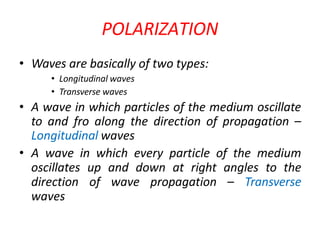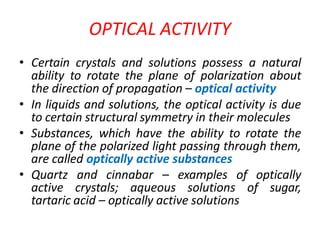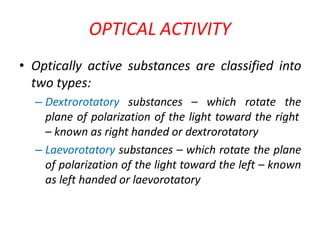This document discusses polarization, interference, and optical activity of light waves. It defines longitudinal and transverse waves, and explains that polarization is a property specific to transverse waves where there is a preferential direction of oscillation perpendicular to the propagation direction. Optical activity is described as the ability of certain materials to rotate the plane of polarization of polarized light passing through them. A Laurent's half-shade polarimeter is summarized as a common instrument used to measure the angle of optical rotation and determine the specific rotation of optically active solutions.






























